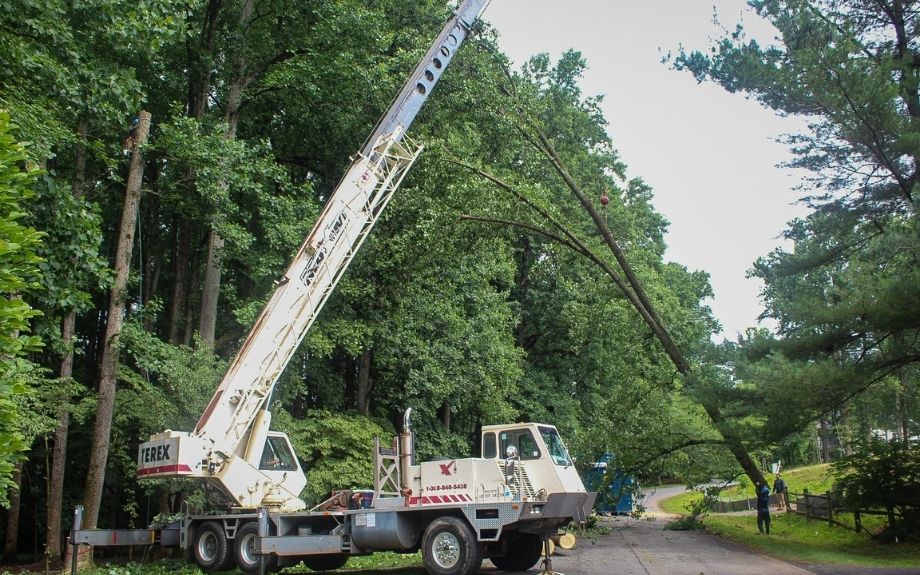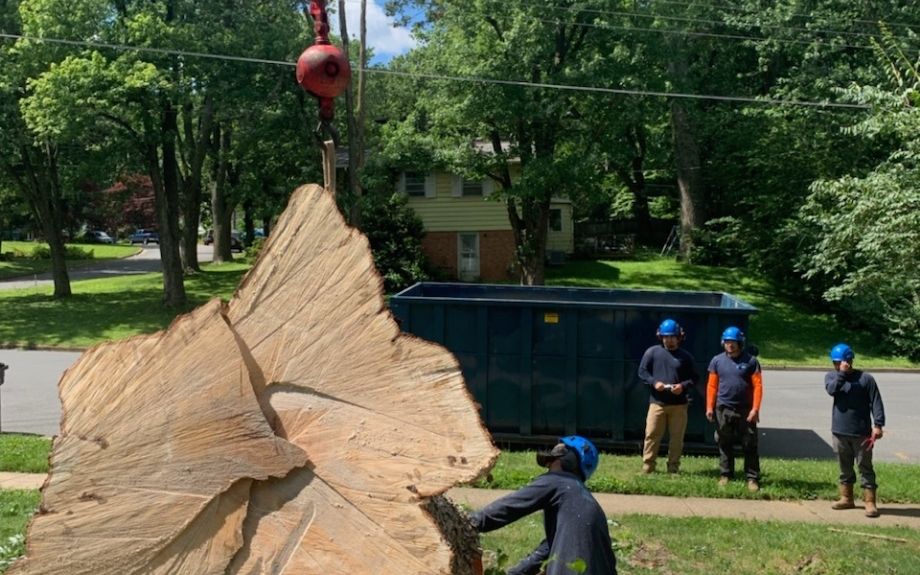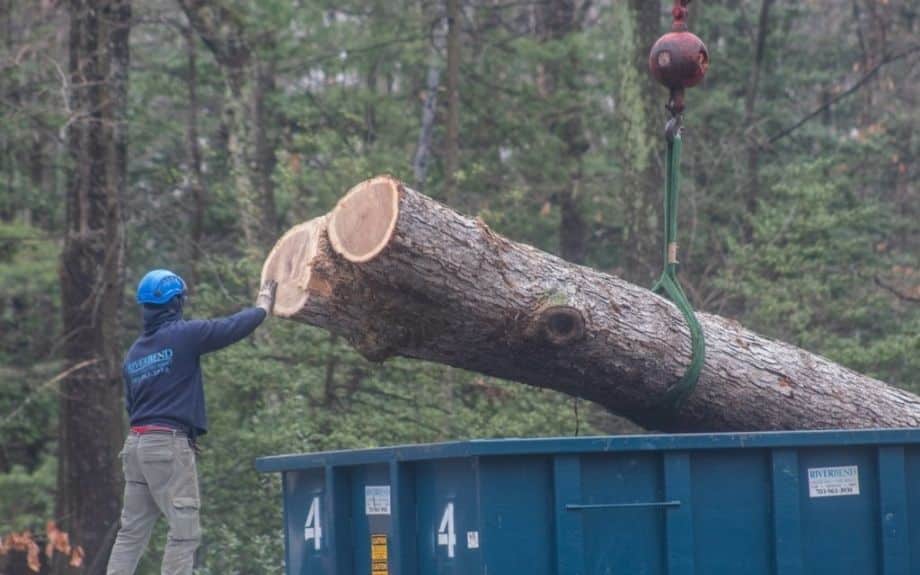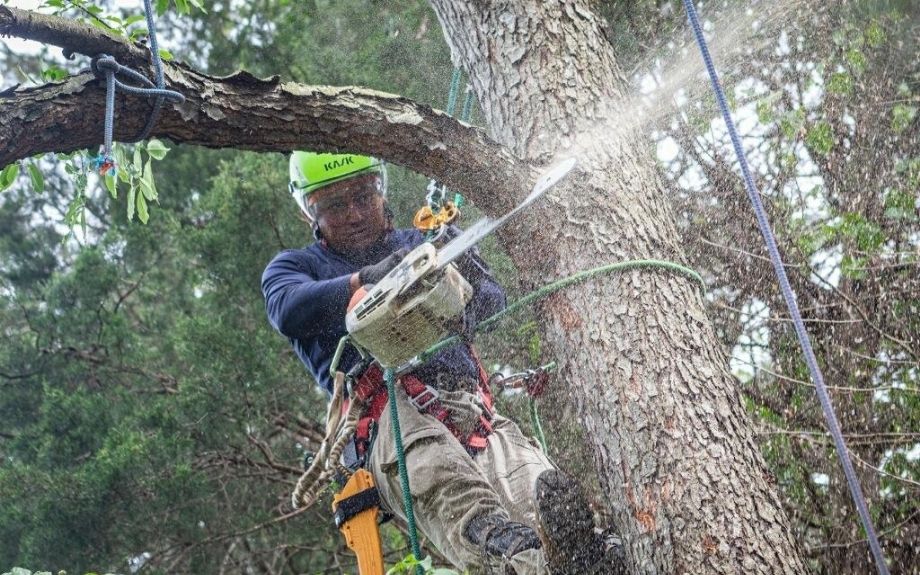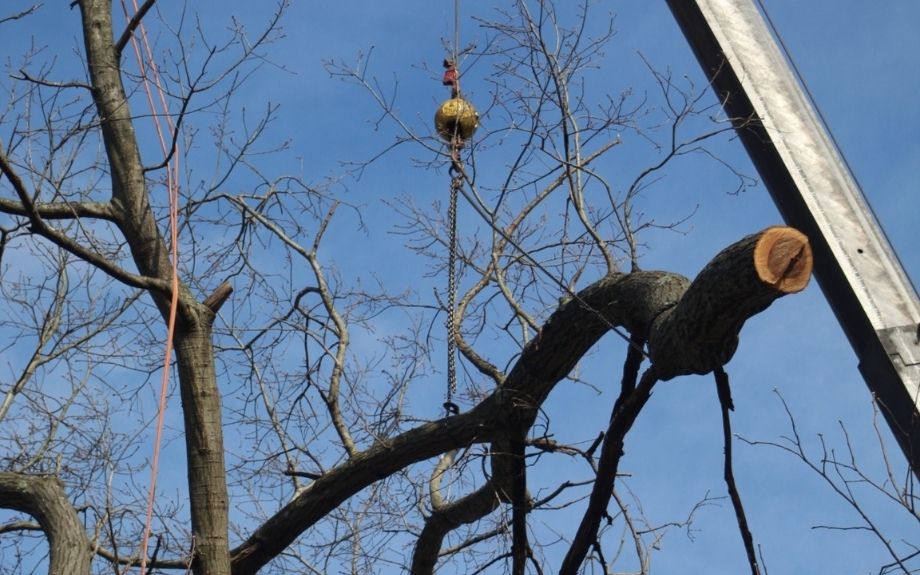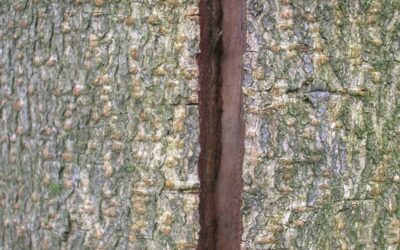Blog Topics
If you’ve never hired a tree care company before or are used to working with a landscaper or a “tree guy” to handle your tree issues, you may think that the only tools needed for tree work are a few pruners, a chainsaw, and maybe a ladder.
The tools, equipment, and vehicles that we use for our tree care services aren’t merely for show, however. They are important parts of tree removals and other tree care tasks. The right tools and equipment help us do our job more effectively, safely, and efficiently.
In this article, we’ll be focusing on one piece of equipment, the crane, to show you how vital it is for the completion of tree removal jobs. By the time you’ve read this, you’ll understand how a crane can help by:
- reaching taller trees,
- allowing us to reach otherwise inaccessible areas,
- increasing our levels of safety,
- decreasing the amount of time a tree removal can take,
- and a few things you may not expect.
Keep reading to learn why our crane may pull up to your house the next time you schedule tree work with Riverbend Landscapes and Tree Service!
What is a tree removal crane?
A tree crane is a specialized piece of equipment that is used for some, but not all, tree work and removals. It’s not the same as the stationary cranes used for construction; tree cranes are mounted on large trucks. The safety and operational regulations are also slightly different between tree cranes and those used in other industries.
The bottom of the crane has a cab for the crane operator. This highly skilled and trained member of the tree care crew sits and operates the crane from the ground. The crane’s boom (the “arm”) can extend and move to reach some of the tallest trees in our area. It’s used to lift climbers into the trees and also to carefully remove heavy, bulky sections of trees.
How is a crane used?
Stabilizing the Crane
On the day of the tree work, the crane is parked and leveled at the job site using outriggers placed on blocks or pads. You may notice that some of the wheels are off the ground when the crane is leveled. Don’t worry, the crane won’t tip over! The outriggers support the crane so that it’s perfectly stable before the boom section of the crane is used.
Stabilizing the crane is vital to the task ahead. Nothing can proceed until the crane is perfectly level. This can take a while depending on factors that are unique to each property, such as:
- the slope of the ground,
- the area around the crane (is the ground soft from a recent rain, for example?), and
- how large the tree is that is being removed.
Getting to Work
Once the crane operator, tree climbers, ground crew, and the rest of the team have a detailed plan in place for the tree work, the physical work of removing the tree can begin.
The crane lifts the climber into the tree (if the tree is strong enough to handle that), where the climber attaches themselves to the tree. They then attach the crane to a section of the tree using a steel cable or nylon strap. The climber cuts away that section of the tree and the crane lifts the cut section up and away from the tree, and over to the ground crew.
Back on the Ground
The ground crew guides the cut section to the ground and removes the cables from it. They then cut the wood into smaller pieces and/or run branches through the chipper.
This whole process is repeated until the entire tree is removed.
NOTE: A similar process may be used for a large pruning job, but smaller sections of the tree are removed.
How does a crane help with taller trees?
While a ladder, lift, or bucket truck can reach some heights, the taller and larger trees in northern Virginia require the use of something that can reach extreme heights and carry heavier weights. The boom section of the crane can help Riverbend arborists and climbers view and access even the tallest trees in our area, giving them the knowledge that is necessary for quick and safe removal.
Does a crane help with urban and suburban tree removals?
Yes! Our crane allows us to access those hard-to-reach areas of a yard or property, such as locations where:
- buildings are close together,
- a gate or wall blocks access, or
- a tree is otherwise hard to reach.
You might picture a tree removal as one large cut at the bottom of the tree, with the tree falling over to crash violently on its side. However, this method of removal is rarely done in neighborhood settings where other trees or buildings are nearby.
Instead, the tree is removed top-down, section by section. Each piece is lifted out by the crane and moved to the drop zone for the ground crew. When needed, the crane can lift the sections over obstacles and buildings. This lets us take down a tree that in other circumstances might not have been possible to remove.
Cranes Can Increase Safety
For some tree removals, a trained climber can climb up the tree that needs to be removed. The climber will then carefully cut off sections of the tree and let them drop or be guided to the ground with ropes.
For many trees in our area though, the trees have been damaged by pests or disease and are rotting from the inside out. These trees have become weak and unstable, making them unsafe for a climber to climb. Other trees may have been damaged from wind or storms and are similarly unsafe for a climber, as they may break apart during the tree removal process.
In these circumstances, a crane may be a safer solution for removing a dangerous tree. Because of the risks involved, not many tree companies are willing to tackle the removal of unsound trees, but a crane can make the task possible. It takes training and experience but removing a hazardous tree using a crane can be done (in some circumstances).
Removing any kind of tree using a crane takes time, training, and experience. But, when required, it can be a much safer alternative than other kinds of tree removal – for the tree, the surrounding area, your family, and the Riverbend crew.
Removing Trees with a Crane Can Be Much More Efficient
Tree removals are a dangerous and laborious project but, in some cases, the use of a crane can make the process more efficient.
If you’ve ever watched a tree removal by crane before, you may have been surprised at how much time was spent on setting up the crane and on discussions by the crew. This is entirely intentional. Once everything is in place, the removal itself will happen quickly. It’s vital for everyone to know the plan, their role, and how everything will proceed before work begins.
During the tree removal, the climber and crane operator are constantly communicating. This may be through a radio head-set, hand signals, or another means of communication, but they need to be communicating back and forth throughout the entire removal. Things like the weight of the section being removed and when the section has been cut and ready to be removed are important pieces of information that help move the removal along faster.
Despite all of the setup, plans, and preparation to make sure everyone knows their job before a removal, the actual task of taking down a tree can go quickly when using a crane for removal. The Riverbend team works together to quickly and safely remove trees in all sorts of situations, so their knowledge and experience are a large part of how we are able to remove trees with such efficiency.
DID YOU KNOW? If you want to plant a more mature tree to make an instant impact in your landscape, you’ll need a crane to get the job done. Mature trees, including their rootball, weigh thousands of pounds. A crane can properly lift, move, and place larger trees, as well as provide needed support while the tree is being planted.
Bonus! Tree Removals Can Be Entertaining
While not an important part of the tree removal process, many customers tell us that they’re fascinated by watching our crew using a crane to remove a tree. It’s not often that a large piece of tree removal equipment is outside your window, working diligently to move sections of a tree that may weigh hundreds or thousands of pounds!
Between the climbers hanging from ropes and reaching tall heights in the tree, the sounds of the chainsaw and the chipper, and the fluid movement of the crane, it can be entertaining to watch the Riverbend tree crew at work.
As long as you are a safe distance away, this doesn’t bother us! In fact, we hope it inspires others to pursue a career in arboriculture. We have the best view of the area, get to be outside, and help homeowners and property owners take care of their trees!
Ready for Tree Removal?
If you have a tree that needs to be removed, contact Riverbend Landscapes and Tree service today to schedule a tree consultation. Who knows, you may even get to watch our crane in action!
Give Us a Call at 703-402-9366
If you'd like help with your trees or landscape, have any questions, or would like to schedule an appointment with one of our Certified Arborists, please give us a call. We'd love to hear from you!

